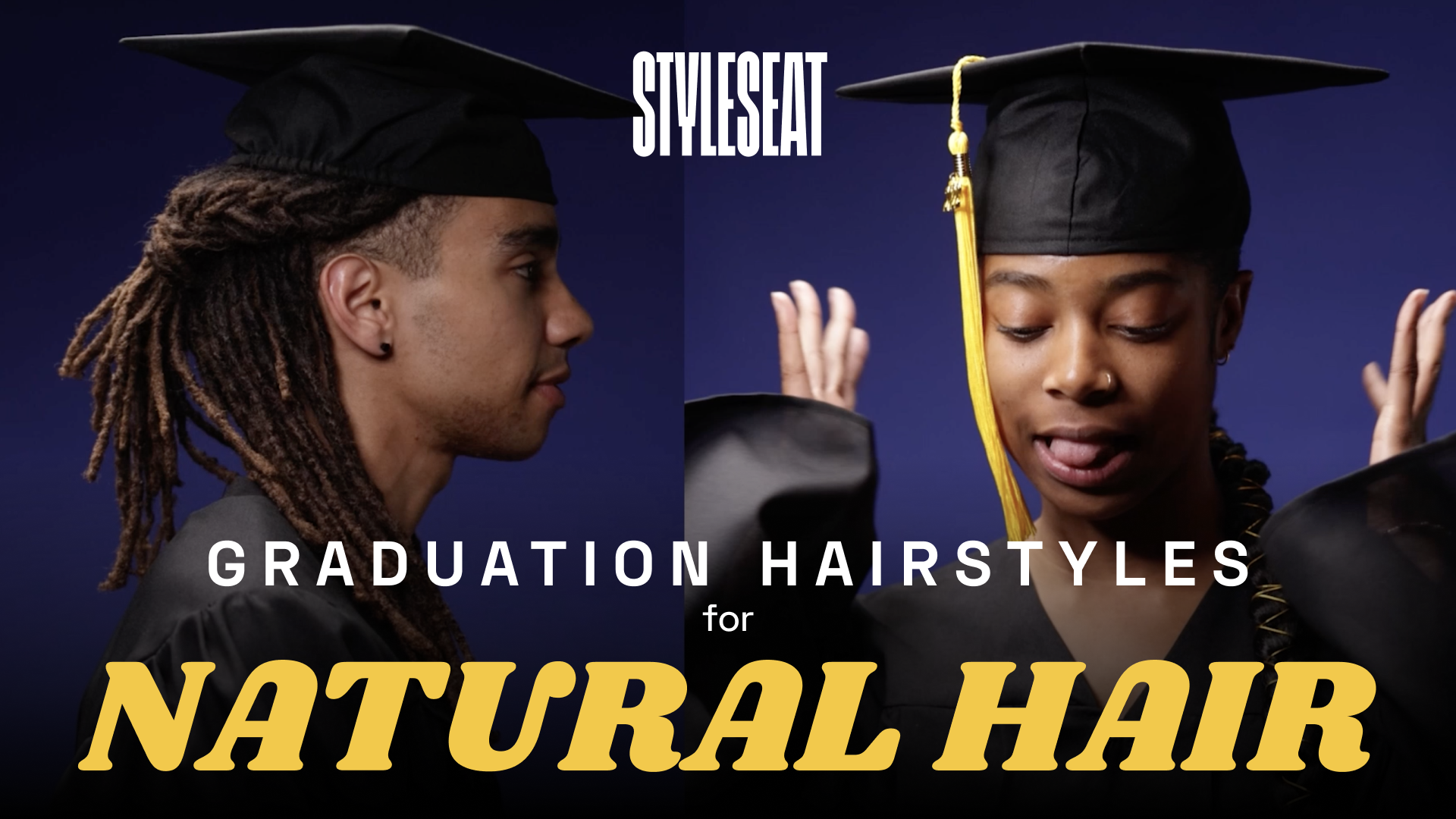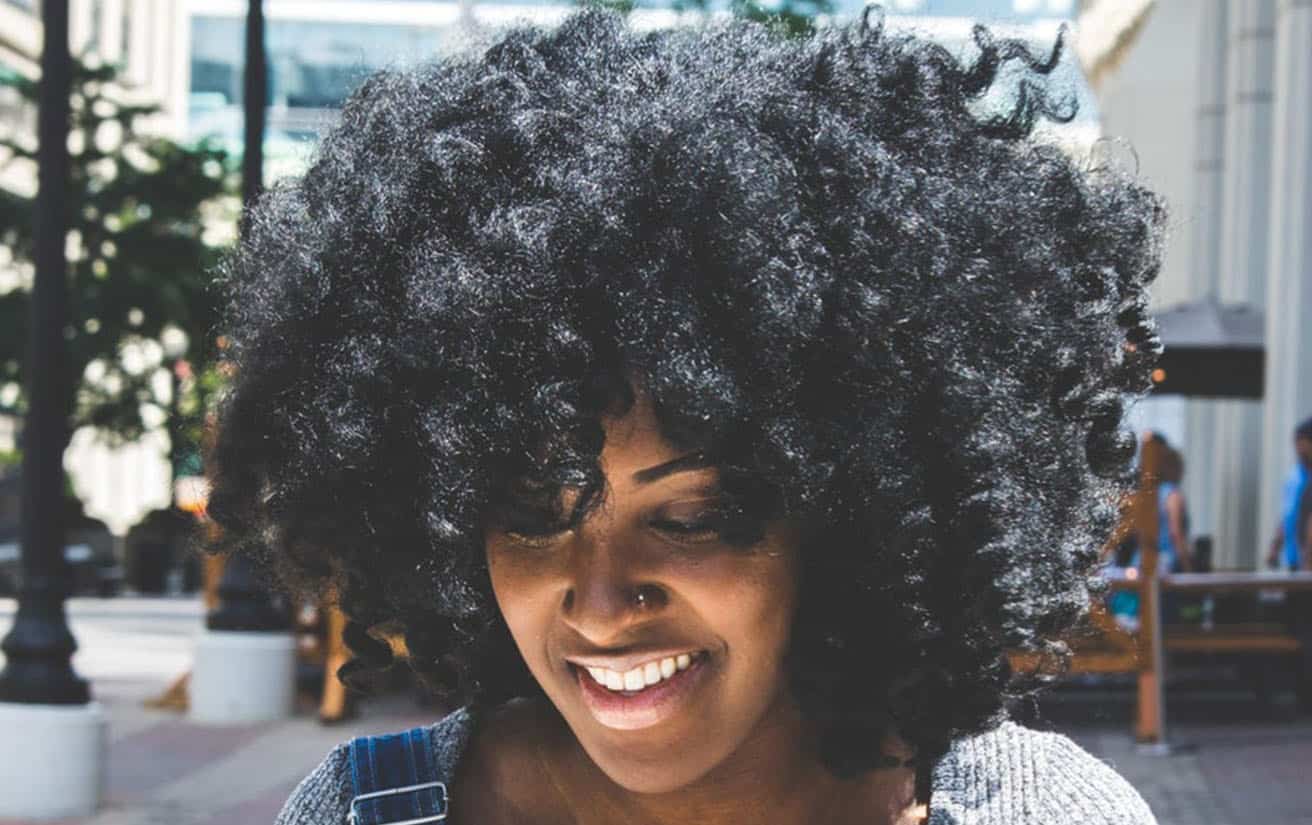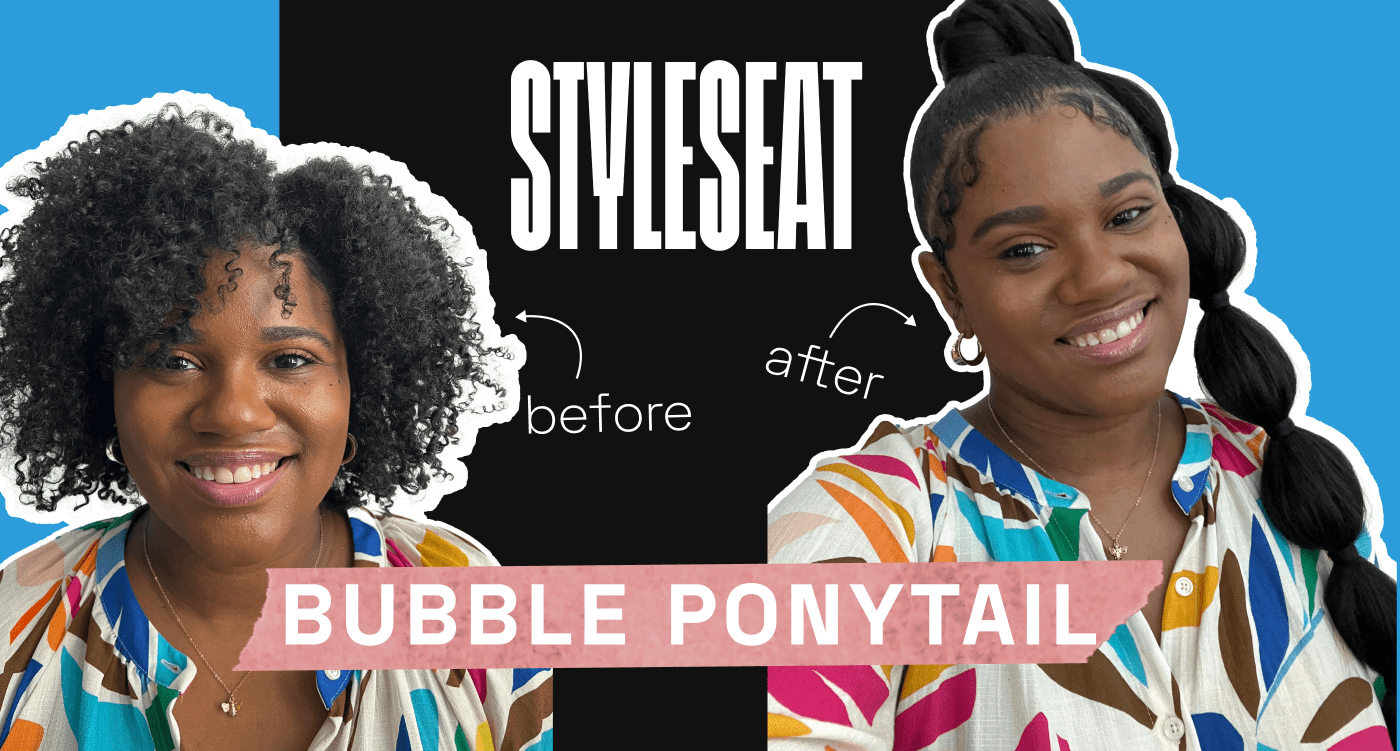How to Stretch Natural Hair: 13 Methods to Try
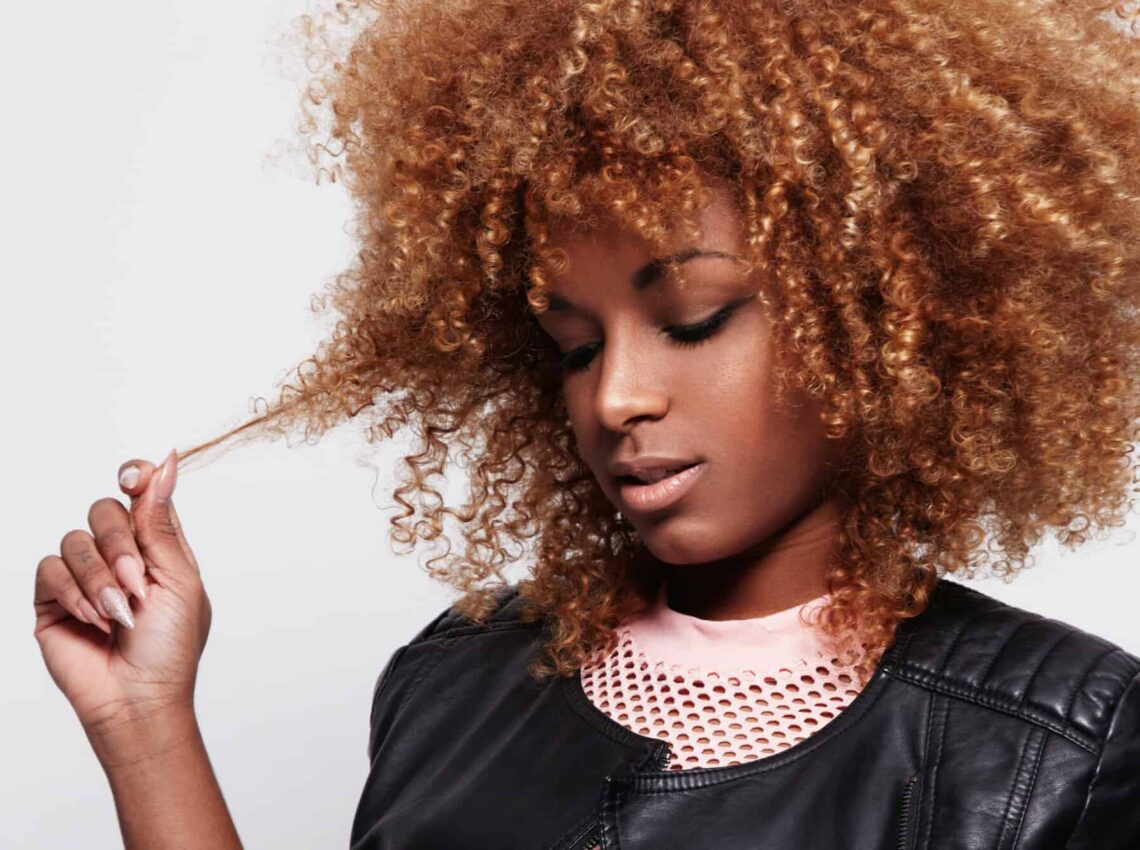
If you have natural hair, then you likely know shrinkage goes with your natural locks like peanut butter goes with jelly — you can’t have one without the other. Rest assured in knowing that shrinkage is normal and to be expected with any curly hair texture.
Shrinkage occurs when your hair loses moisture and your curls change from a loose, stretched curl to a more tightly compacted coil. This doesn’t mean your hair is dry or damaged — in fact, it indicates healthy kinks, coils, and curls, as this is what forms a curly texture.
While shrinkage is natural and signifies healthy tresses, we don’t blame you if you want to stretch your hair to try out that new natural hairstyle you saw on your feed. Some salons also require you to stretch your hair prior to certain services — so be sure to double-check with your salon of choice before your appointment.
Learn how to stretch your natural hair with the 13 methods below to find the method that works best for you, your hair, and the ultimate look you want to achieve.
Is it good to stretch my natural hair?
Stretching your natural hair can be beneficial for a variety of reasons. It can limit tangles, help you alter your hairstyle and have a different look, and assist your hair in better absorbing products. If you’ve gone a period of time without heat or other styles, stretching your hair can also help you see its full length and how much it has grown.
However, using excessive tension or heat can damage your hair over time. It can also alter your curl pattern, so consider using the following methods of stretching natural hair sporadically — and remember to care for your natural hair even if you aren’t stretching it.

Twist-out
This heat-free method is one of the easiest ways to stretch your hair. You have two options for how to rock a twist-out: with twists intact, which creates a spiral curl once taken out; or without twists intact, which showcases a defined wave pattern.
Even the most novice hairstylist can achieve a twist-out with a few easy steps:
- Evenly part washed hair down the middle.
- Twist two smaller, even strands of hair together. You can make these twists as small or as large as you’d like.
- Secure the end by twirling it around your finger.
- Seal the twist with oil for added hydration.
You can wear a twist-out for up to a week, or untwist the strands once the style has dried for a voluminous curl.
Braid-out
A braid-out is nearly identical to a twist-out, but instead of using two strands of hair to twist together, you use three strands to create a braid. This results in more of a wave than a spiral coil.
You can make the braids as small or as large as you want. Once your braids are dry, a braid-out can last for a week or longer, or you can take the braids out for a loose, beachy wave.
Pineapple
While you may be used to the pineapple style for errands, sleeping, or between wash days, this style can also help you stretch your hair. There are many different methods for achieving the pineapple style, but there are a few foundational steps to follow:
1. Gather your hair into a high ponytail that sits at the top of your head. Depending on the length, thickness, and texture of your natural hair, you can choose to make more than one ponytail.
2. Wrap a satin scarf around your head, tying at the front, to keep the hair at the back and sides of your head in place.
3. Take down the pineapple the next morning or hours later for a freshly stretched style.
On top of the benefits of stretching your hair, the pineapple method can also help prolong twist-outs and wash-and-gos. Regularly utilizing the pineapple method can also prevent hair tangling and breakage, and can help keep your curls in place while you sleep.
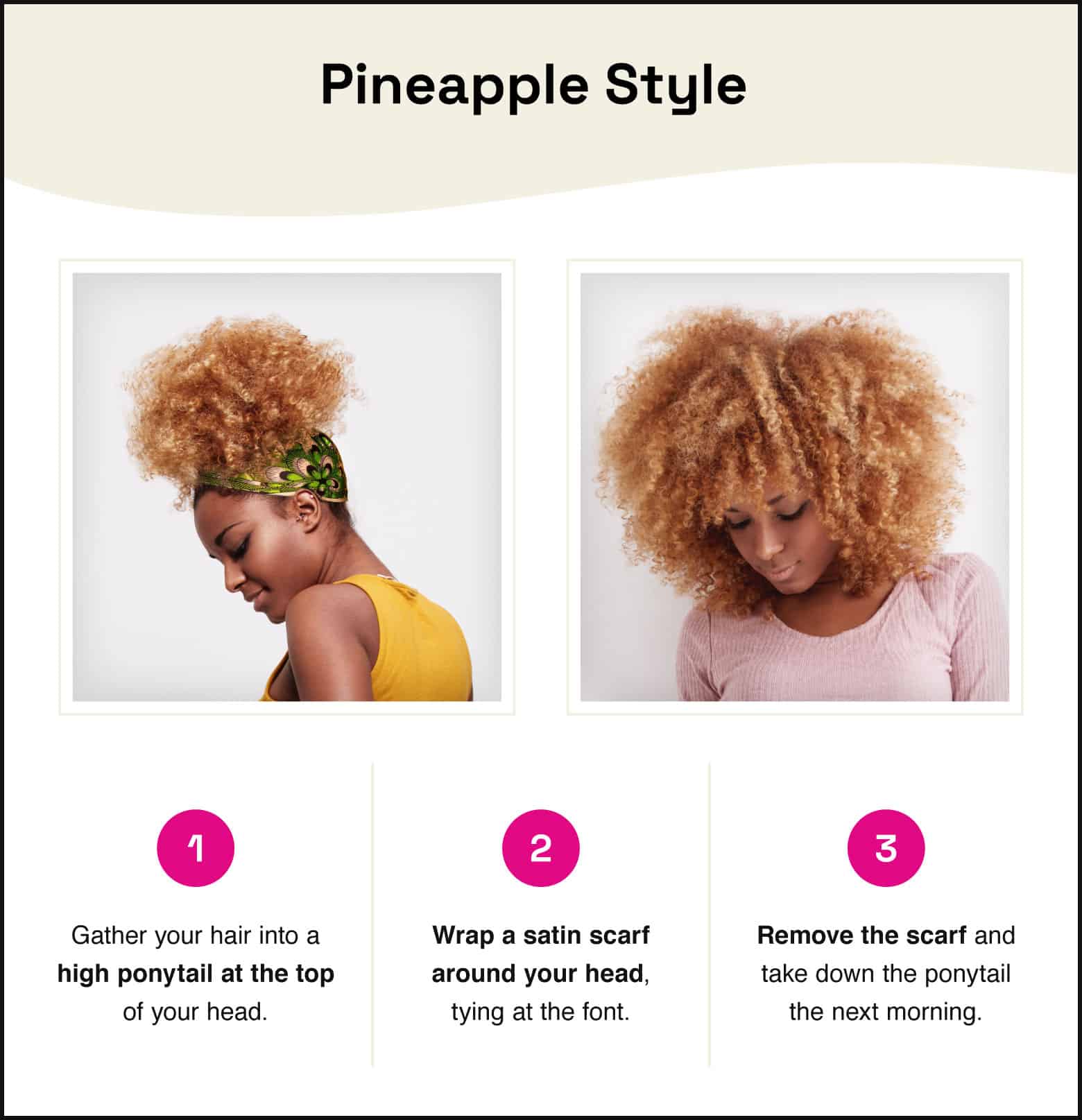
Combing or brushing
If you’re short on time or want a simple way to stretch your hair, look no further than the comb or brush currently in your bathroom. You can even use your fingers for a true no-tools stretching technique.
The more times you comb or brush through your hair, the more stretched it will be, so keep that in mind when deciding what style you’re aiming for. Use fewer strokes of your brush, comb, or fingers if you want some of your natural texture to shine through.
For maximum results, combing or brushing works best on dry hair — however, this can also lead to frizz. If you’re looking for a no-frizz stretching method, then you may want to try another technique on this list.
Bantu knots
Bantu knots are not only a unique protective hairstyle, but can help you stretch your hair without using heat at the same time. This hairstyle also has a storied history, and can be traced to the Zulu people of Southern Africa as far back as the 2nd millennium BC.
You can create Bantu knots while your hair is either wet or dry, with a few simple steps:
- Part your hair into defined, square sections. You can also get creative with your parts, and part into different shapes like triangles or diamonds. A large section of hair will create large, loose curls, while a small section will create tighter coils.
- Twirl each section until the hair starts to twirl into itself. Don’t twist too tight, or you risk damaging your hair and scalp.
- Wrap the twirl around itself until it resembles a knot.
- Secure the knots in place with a bobby pin, or twist the ends of the hair around the base of the knot to keep them in place.
- Leave the knots in until dry, then carefully unravel to reveal your curls. You can also leave your knots in for up to two weeks.
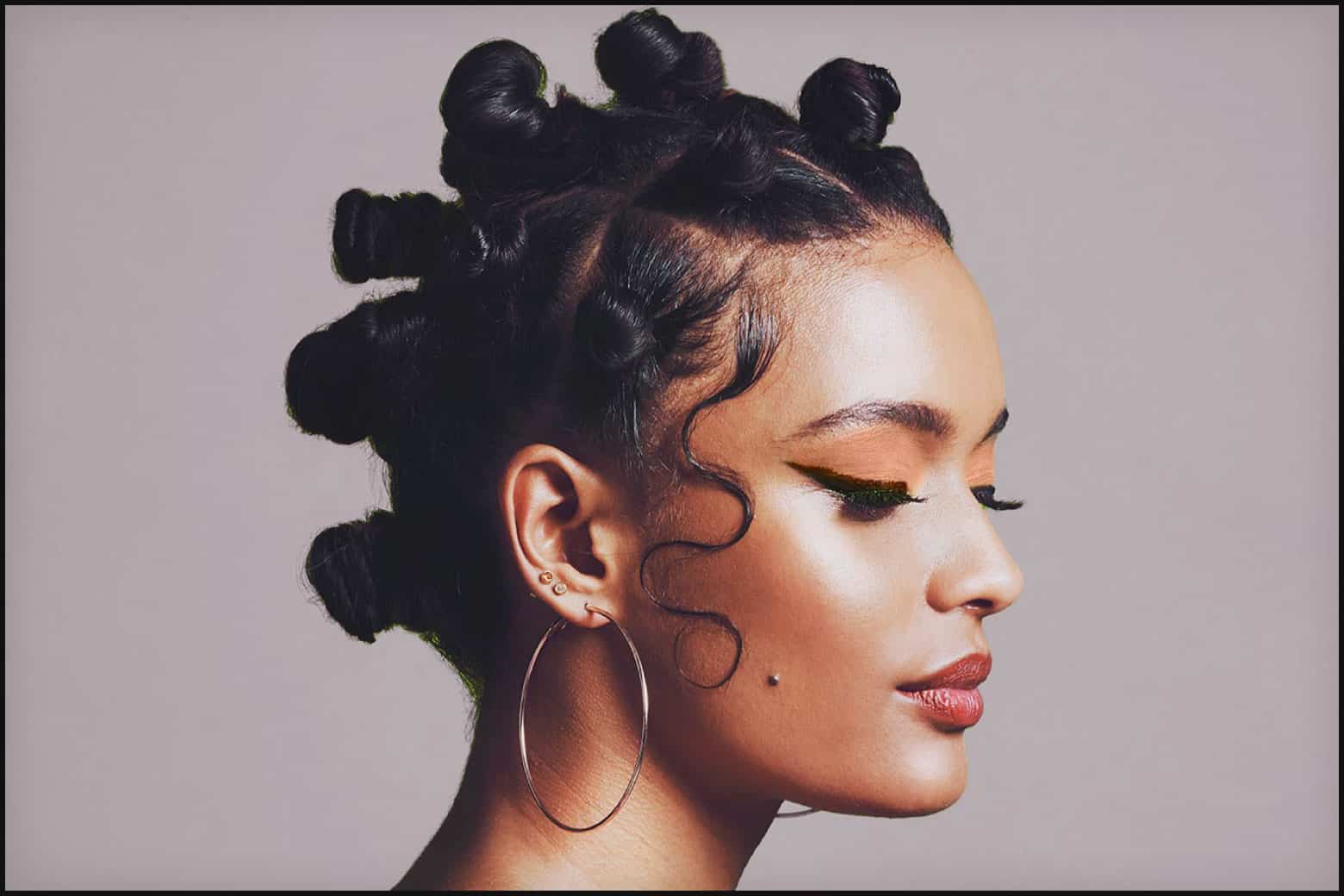
Loose bun
A single, loose bun can provide an easy, no-fuss way to stretch your hair and achieve some soft waves. If you have long or thick hair, or just want even, symmetrical curls, try pigtail buns on either side of your head.
To avoid breakage and keep your hair happy, be sure to put your hair in a bun after it’s been washed, dried, and unraveled — and be careful not to tie the bun too tight.
Banding
This heat-free stretching method ties wet hair up in a stretched position until it fully dries. To start, you’ll need elastic hair ties and freshly washed, combed, and detangled hair.
After washing your hair, divide your hair into sections. You can keep these sections medium to small, depending on the look you want to achieve. Wrap hair ties around each section of hair from the root down, until the section is covered with hair ties.
Repeat for each section of hair until each strand is covered, and leave the bands in until your hair is completely dry.
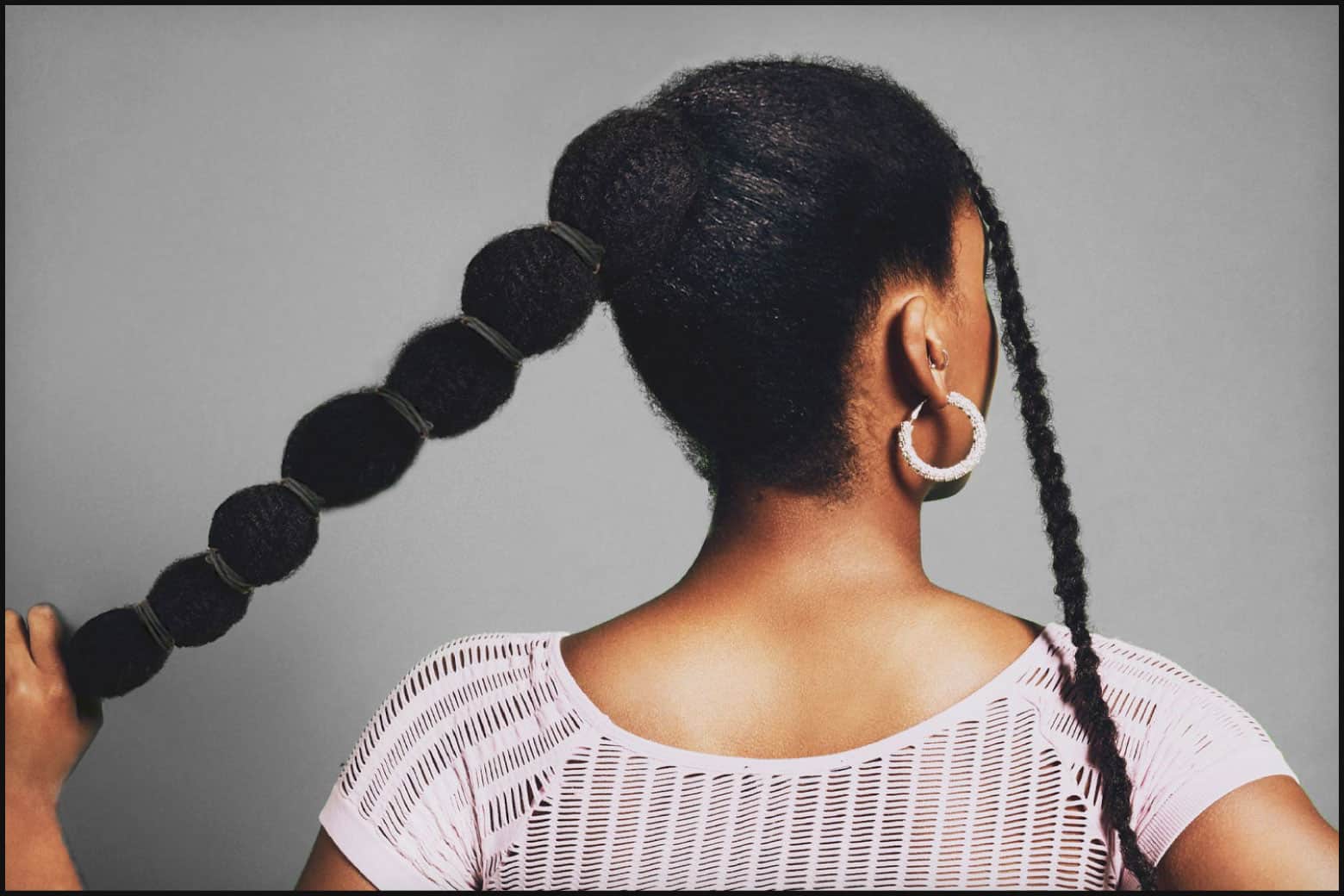
If you want to completely stretch your hair, use multiple close-together bands for each section; but if you’d rather preserve some natural texture, space out the bands by at least an inch and avoid putting any hair ties on the ends of your hair.
To keep your hair safe during this stretching method, start banding when your hair is damp — not soaking wet — as this could ultimately damage your hair (or even cause mold growth on the bands). It’s best to do this with moisturized hair, and if you want to prevent breakage or tearing out your hair when removing the bands, use some hair oil on the bands for more slip.
African threading
Somewhat similar to banding, this hair stretching method utilizes thread instead of hair bands to wrap around your hair. This hairstyle also has a strong cultural significance for those who can trace their lineage to the African diaspora. African threading is used as a protective style left on the hair for an extended period of time in several sub-Saharan African communities, to both retain length and stretch the hair.
How much hair you cover in thread is up to you and the style you want to achieve. The more hair is wrapped, the straighter your hair will appear. The same can be said for how long you keep your African threading in — the longer you keep it in, the longer the growth becomes. You can leave threading in for as long as six weeks.
Curlformers
Curlformers help you achieve the same look as a curling iron or wand, hold the heat. This double-duty tool gives your waves ultra-defined curls, while stretching your hair in the process.
Much like many other stretching techniques, how much hair you use in your Curlformers will dictate how the curl looks — a smaller section of hair will form a tighter, more defined curl, while a larger section will provide a looser wave.
To achieve Insta-ready curls, have freshly washed hair and grab your Curlformer to get started.
- Prep and soften your hair with leave-in conditioner, oil, or a conditioning mask. You can use Curlformers with either damp or dry hair. fsdfd
- Insert the hook and slide it through to the other end.
- Isolate the section of hair you’ll be inserting into the Curlformer and give it a slight twist to make it easier to pull through the device.
- Add setting foam to the isolated section to add grip to the hair.
- Place the hook around the section of hair, close to the scalp. Gently pull the hook through the Curlformer, with the other hand on the opposite end of the hook.
- If your hair snags, tangles, or doesn’t pull through smoothly, push the hook back to the scalp and start over, combing the strand out so you aren’t curling tangled hair. If hair is escaping the hook and the Curlformer, make your sections smaller.
- Pull the hook through the hair in one motion until all of the hair is encased in the Curlformer. Remove the hook, and the device should snap back to its spiral shape.
- Repeat over the entire head, leaving the Curlformers on until your hair is dry (or around 45 minutes on dry hair). Test if your curls are ready by taking one Curlformer out — preferably the biggest or thickest piece. To speed up the drying process, use a hood dryer or a handheld blow-dryer. Be sure to use a heat protectant if you plan on using a drying tool.
- To remove, hold the section of hair close to the scalp by the roots with one hand, and with the other, straighten the Curlformer and slip it off the hair.
Curlformers come in different colors to dictate size and curl direction (toward or away from the face). Use the same color Curlformer for uniform curls, or play with different sizes and directions for a more natural, lived-in curly look.
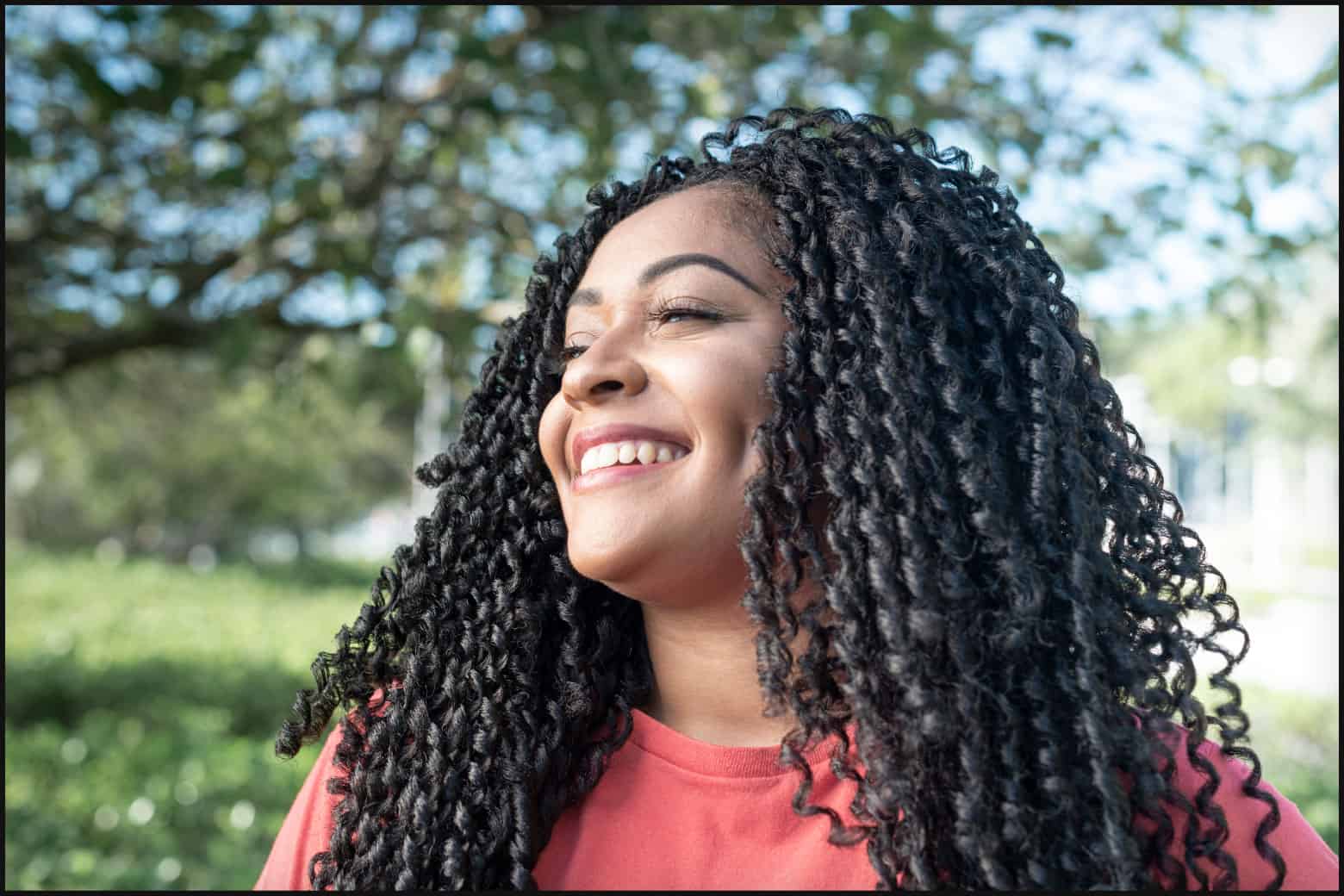
Waveformers
Waveformers work in the same way as Curlformers, but produce loose waves instead of curls. There are size and direction options for Waveformers as well, so you can have your pick of tighter or looser waves.
Flexi rods
You’ve definitely seen a flexi rod before, and it’s no wonder why — these are a very easy, heat-free way to stretch your natural hair that gives perfect curls.
Since flexi rods come in a variety of sizes, you’ll first want to choose the size that works best for your desired look — a small flexi rod for tight curls, or a larger one for bouncier waves. Flexi rods can make for an awkward sleeping arrangement, so you may want to consider styling your curls in the morning to allow them to set throughout the day.
Once you’ve chosen your desired size, coat your hair in a hydrating styling cream or oil, then curl your hair around the rod. To keep it in place, bend the ends of the rod upward.
Once your hair is set, curve the ends of the rod downward and unravel from your hair, making sure to follow the pattern of the curl spiral, as not to disrupt the way your hair has set.
Perm rods
Perm rods function in much the same way as flexi rods, with the major difference being the size. Perm rods are much smaller than flexi rods, which allow for a tighter, more defined perm-like curl.
Start by choosing your desired perm rod size, and follow the same steps you would for flexi rods. Secure the rods in place using the end attachment and stretch from one end of the rod to the other using the lock function.
To remove perm rods, remove the lock mechanism and unravel following the curl pattern.
Tension method
This method of stretching your hair does require heat, but can help you go from dripping wet to dry and styled hair with relative ease.
All you need is a blow-dryer with a concentrator nozzle and heat protectant to get started — medium or low heat and high speed for your blow-dryer is recommended for this method.
- Part your hair into several sections and apply heat protectant, then detangle and smooth hair.
- Gently stretch hair downward with your fingers. While hair is stretched, move the concentrator nozzle repeatedly in a downward motion (from roots to tips) over the section of hair until dry.
How long does it take to stretch natural hair?
No method of stretching your hair will take the same amount of time. Some methods, like the tension method or using Curlformers, will take a few minutes to an hour or two, while others, like Bantu knots or threading, can be worn for a few weeks.
At the end of the day, there are numerous ways to stretch your hair that allow you to try out a different look while ensuring your curls bounce back. The best method for stretching hair really comes down to you, your personal preferences, the final look you want, and the tools you have available.
If you want to try out a style that you don’t have tools for or have any questions about the stretching process, find a hair stylist near you. A stylist can walk you through the stretching process or take care of it for you — so all you have to do is rock your new look.
